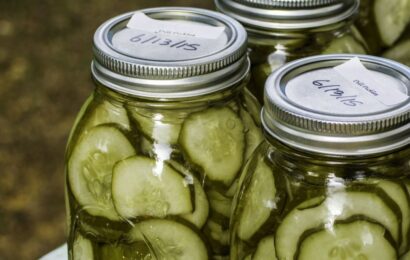People often complain about aches and pains as they get older, and for many, with good cause. Osteoarthritis, or arthritis, for short, can cause pain, stiffness, and swelling, as well as a decrease in motion. Arthritis is common, affecting more than 32 million adults in the United States, according to the CDC (Centers for Disease Control and Prevention).
Arthritis may be more common in people who have diabetes, too. The Arthritis Foundation states that, “Almost half of all adults with diabetes — 47% — also have arthritis.” And people with arthritis have a 61% higher risk of developing diabetes than people without arthritis.
Treatment for arthritis may include increasing physical activity, medication, physical therapy, and, in some cases, surgery. What’s often overlooked, however is the role of nutrition in managing arthritis. If you have arthritis, how might a healthy diet help you?
To get cutting-edge diabetes news, strategies for blood glucose management, nutrition tips, healthy recipes, and more delivered straight to your inbox, sign up for our free newsletters!
How diet can help arthritis
Weight loss
Not surprisingly, perhaps, being overweight or obese puts a lot of pressure on weight-bearing joints, such as the hips and the knees. In fact, being overweight is a risk factor for developing arthritis. A study published in a 2005 issue of the journal Arthritis and Rheumatism showed that every one pound of weight lost reduced the load on knees by four pounds. Put another way, losing 5% of your body weight (that’s 12 pounds for a 250-pound person) helps reduce pain and disability. While there’s no magic wand that can wave your weight away, there are some tried and true tips that can help you safely lose weight and keep it off.
- Talk with your doctor or dietitian about how much weight loss is best for you, and then make a plan, with their help, for setting a realistic goal for how you will lose that weight.
- Start tracking your food intake. You can keep a food journal or use a smartphone app. The point is to understand what, when, and how much you eat so that you focus on what kind of changes to make.
- Make the easier changes, first. That might mean cutting back on fast foods or switching what you eat for snacks. Some people start with changing what they drink, whether it’s stopping juices or sweetened coffee drinks, or drinking less alcohol.
- Aim to fill half of your plate with low-carb vegetables (greens, broccoli, peppers, etc.), leaner protein foods, whole grains, and fresh fruit.
- Reconsider your cooking methods: broil, grill, bake or poach foods instead of frying.
Foods to eat
Fatty fish
Certain fish, such as salmon, mackerel, sardines, and fresh tuna, contain a type of fat called omega-3 fatty acids. These fatty acids have anti-inflammatory properties that may help reduce joint swelling and pain and reduce morning stiffness.
If you’re not a big fan of fish, you can get omega-3 fatty acids from chia seeds, flaxseeds, and walnuts. You can also talk with your doctor about taking a fish oil or krill oil supplement.
Fruits and vegetables
It’s hard to dispute the nutritional benefits that fruits and vegetables have to offer. Besides being high in fiber (which can help you feel full so that you eat less), they contain antioxidants that might ward off inflammation. When it comes to fruit, fresh is best, but frozen is also a great option. Best fruits include:
- Berries
- Citrus fruits
- Papaya
- Cantaloupe
- Pomegranate
- Plums
- Peaches
All vegetables are healthy, but these vegetables score big points when it comes to antioxidants:
- Broccoli
- Cabbage
- Beets
- Carrots
- Dark leafy greens
- Red peppers
- Sweet potatoes
Beans and legumes
Beans and legumes (think, for example, of black beans, kidney beans chickpeas, and lentils) are full of fiber and protein, but they can also lower the level of C-reactive protein, which is a marker of inflammation. Add beans to salads, soups, and stews, and consider eating more meatless meals that use beans as the primary protein source (check out this recipe for Quick White Bean Soup).
Nuts
Nut lovers rejoice! Walnuts, almonds, peanuts, pecans, and pistachios contain omega-3 fatty acids, as well as monounsaturated fat, which both help reduce inflammation. Some nuts also are high in magnesium, L-arginine, and vitamin E, says the Arthritis Foundation, which can also help fight inflammation.
When eating nuts, skip the heavily salted varieties and choose lightly salted or, ideally, unsalted. Keep in mind that because of nuts’ high fat content, they are high in calories, so keep portions to a small handful.
Garlic and onions
Garlic and onions, members of the allium family, contain a compound called diallyl disulphide, which might prevent damage to cartilage. They also contain quercetin, an anti-inflammatory compound. Plus, they’re super low in carbs!
Green tea
Research indicates that green tea may play a role in reducing inflammation. In one study published in 2018 in the journal Clinical Nutrition, green tea extract was thought to help control pain and improve knee joint function in adults with osteoarthritis. Green tea contains high levels of polyphenols, which are antioxidants, that are thought to reduce inflammation.
Foods to limit
Saturated and trans fats
Saturated fat, found in red meats, butter, and whole milk dairy foods, is thought to contribute to inflammation. The same holds true for trans fat, found in some margarines and some fast foods. Switch to healthier fats, such olive, peanut, or canola oils, and choose lower-fat forms of dairy foods.
Added sugars
Added sugars may cause the release of cytokines, which promote inflammation. Sweetened beverages, such as soda, sweet tea, flavored coffees, juices, and energy drinks are key culprits, but any foods that have added sugars (read the ingredient list for words ending in -ose, as well as other sugars like honey, corn syrup, or maple syrup) should also be limited.
Refined carbohydrate foods
Some carb foods that have been processed or refined, such as white bread, white rice, and foods made from white flour, may contribute to inflammation. You don’t need to cut out carbs altogether; when it comes to grains, choose whole-grain sources (hint: look for a whole grain as the first ingredient on the ingredients list). Examples of whole grains are whole-wheat bread, brown rice, and quinoa.
Alcohol
For most people, alcohol in moderation is usually OK. And a moderate amount of alcohol may actually lower biomarkers of inflammation, such as C-reactive protein, interleukin-6, and TNF-alpha receptor 2. But if you have arthritis, alcohol may interact with some of the medications you might be taking, including ibuprofen, naproxen, or acetaminophen. Ask your doctor if it’s safe for you to drink alcohol if you have arthritis.
Dietary recommendations for arthritis may also help you manage your diabetes, as well as protect against heart disease, high blood pressure, and some forms of cancer. Also, remember that including physical activity in your daily routine can help ease the pain and stiffness that stem from arthritis.
Want to learn more about maintaining joint health with diabetes? Read “Joint Exercises for Staying Limber,” “14 Ways to Reduce Joint Pain With Diabetes,” and “Thawing Out That Frozen Shoulder.”





